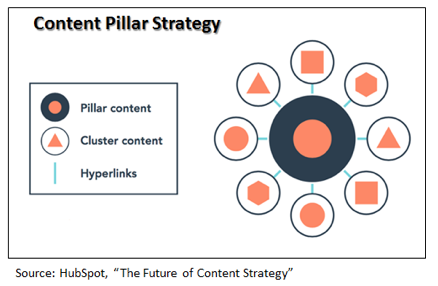12 Simple Actions that Will Make Any Professional Service Firm a Competitive Dynamo
I had a very interesting talk with a Chief Marketing Officer at a medium sized CPA firm last week when the topic of the responsibilities and accountability partners and business developers have to the marketing department came up.
“It seems,” he said, “That we’re always being used reactively, rather than proactively. That makes us order takers and button pushers rather than having a seat at the Executive Committee level to discuss goals and strategy”
“Between the two of us, I’m not even sure the partners know how much more we can contribute than writing proposals or updating bios or creating sales sheets.”
Hmmm… seems like I’ve heard this 2 or 3 (hundred) times before.
When it comes to professional services marketing, getting more visibility, leads, and new business isn’t a one-sided affair. It takes a coordinated effort using both marketing and sales skills to find and/or nurture a prospect from lead to customer.
Today I’d like to address a dozen responsibilities – put into the framework of an action plan – that partners and business developers can do to give the marketing department the insights, observations, and tools they need to help those same partners and business developers accelerate their new business efforts.
What Partners and Business Developers Should Be Doing for the Marketing Department
Here are 12 action items that partners or business developers in a CPA, consulting, law, or staffing/recruiting firm should do for/with the marketing department
- Define the quantifiable leads and sales goals for the company and/or practice area, and what percent of those goals are expected to come from marketing initiatives. (Note: this can be a point of negotiation.)
- Provide them with an assessment of what competitors are doing right and wrong with their branding, content marketing, and lead generation activities.
- Deliver information, insights, and observations on trends affecting new business opportunities for the company and/or practice area.
- Identify critical issues, pains, and hot buttons affecting the firm’s clients and prospects.
- Identify pending standards, regulation, legislation, case law, or Executive Orders affecting new business opportunities for the company and/or practice area.
- Give them content like articles, blog posts, white papers, eBooks and presentations from external subject matter experts about trends, issues or changes affecting new business opportunities.
- Do an honest assessment of what has worked and what hasn’t work in regard to increasing visibility and getting more leads and new business from marketing initiatives.
- Share objections from prospects at the top, middle, and bottom of the sales funnel.
- Tell them stories about how a lead was secured and moved through the sales funnel to closure as a new client.
- Identify opportunities to develop a case study that will showcase results.
- Identify of critical competitive differentiators.
- Agree on want constitutes a lead, a marketing qualified lead and a sales qualified lead.
What Does Marketing Do With This Cornucopia of Insights?
First, turn the insight and observations you get into “helpful” content. (For more about the concept of “helpful content” read this blog post). A skill that an experienced marketer has is to think strategically about the buyer’s journey, and then, design the scope and type of content that needs to be developed for each stage of that journey.
For example, at the top of funnel, your marketing team should be able to suggest topics and titles for blog posts and white papers based upon partner and biz dev observations on industry trends or issues.
At the middle of the funnel, the marketing tram should be preparing marketing materials that are a combination of advertorial and non-advertorial messaging.
At the bottom of the funnel, the marketing team should be focused on proving advertorial materials like sell sheets and updated bios that will be used by the prospect to select a provider for their needs. For more bottom of the funnel insights, check out this post, Content That Helps Professional Service Firms Close Sales.
Second, a number of the steps involve partner and biz dev willingness to give marketers a seat at the firm’s planning table. Marketers should participate in goal development, particularly in relation to taking responsibility for generating leads, marketing qualified leads, and sales leads. This seat should come with some level of budget authority for securing the tools, technologies, strategies and tactics that will be necessary for realizing those goals.
Third, be careful what you wish for. It’s easier to hide behind a stack of LinkedIn bios awaiting development than to step up to the plate and be accountable for reaching quantifiable goals. If you’re not ready to accept responsibility and see the harsh light of results shining down on your career, you might want to keep your head ducked down … or at least until your management team starts becoming literate, interested and involved in marketing metrics.
Next Steps
If your firm is looking for guidance on how to align marketing and partner/biz dev sales efforts, we can help with our suite of sales consulting and sales enablement services. Or, if you need assistance on developing a content strategy pursuant to your buyer’s journey, we’re only a phone call away.
Click here to connect with me via email, or give me a call at (585) 750-8258.
.png)









Leave a Comment